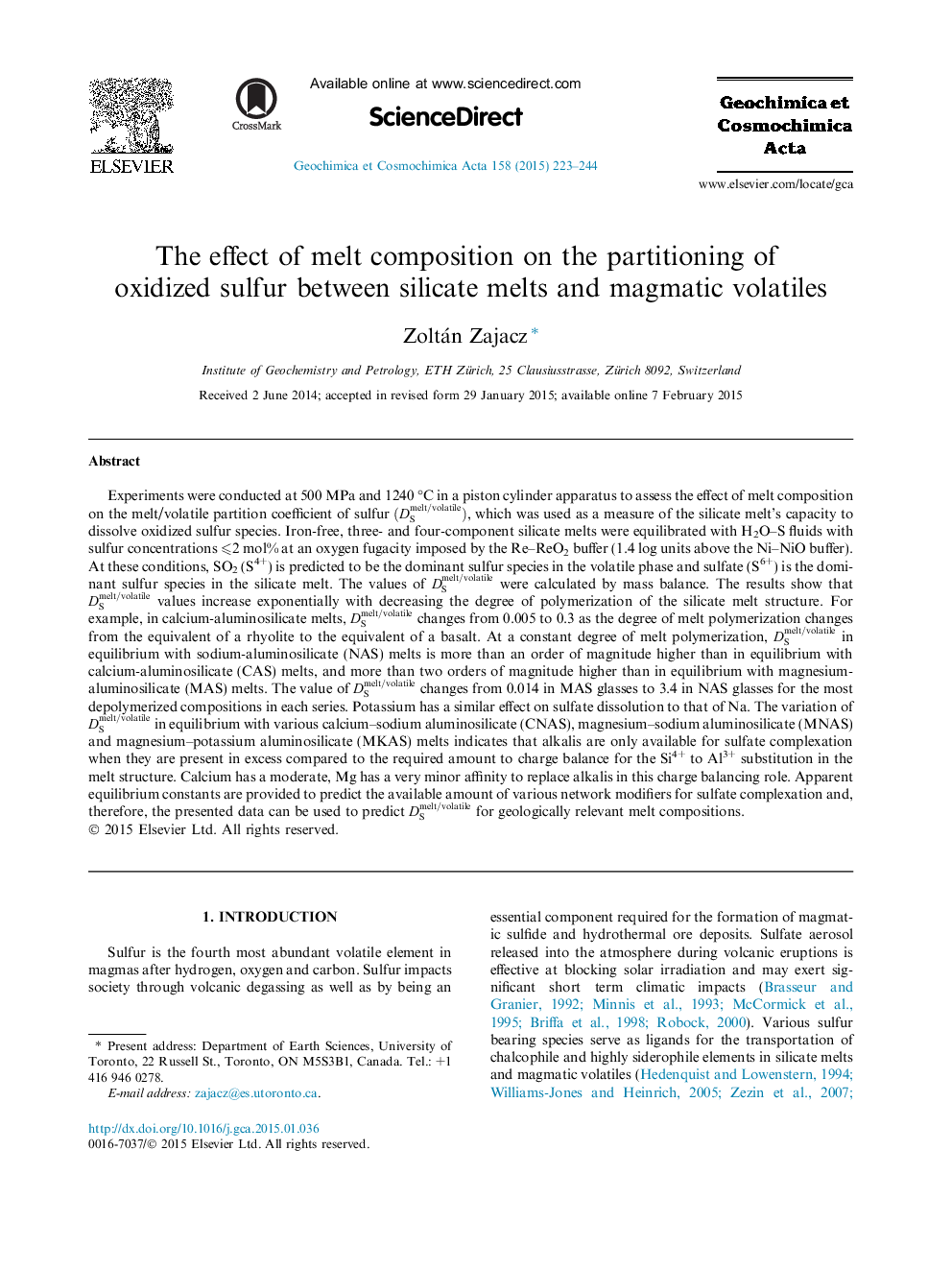| کد مقاله | کد نشریه | سال انتشار | مقاله انگلیسی | نسخه تمام متن |
|---|---|---|---|---|
| 4701932 | 1637999 | 2015 | 22 صفحه PDF | دانلود رایگان |
Experiments were conducted at 500 MPa and 1240 °C in a piston cylinder apparatus to assess the effect of melt composition on the melt/volatile partition coefficient of sulfur (DSmelt/volatile), which was used as a measure of the silicate melt’s capacity to dissolve oxidized sulfur species. Iron-free, three- and four-component silicate melts were equilibrated with H2O–S fluids with sulfur concentrations ⩽2 mol% at an oxygen fugacity imposed by the Re–ReO2 buffer (1.4 log units above the Ni–NiO buffer). At these conditions, SO2 (S4+) is predicted to be the dominant sulfur species in the volatile phase and sulfate (S6+) is the dominant sulfur species in the silicate melt. The values of DSmelt/volatile were calculated by mass balance. The results show that DSmelt/volatile values increase exponentially with decreasing the degree of polymerization of the silicate melt structure. For example, in calcium-aluminosilicate melts, DSmelt/volatile changes from 0.005 to 0.3 as the degree of melt polymerization changes from the equivalent of a rhyolite to the equivalent of a basalt. At a constant degree of melt polymerization, DSmelt/volatile in equilibrium with sodium-aluminosilicate (NAS) melts is more than an order of magnitude higher than in equilibrium with calcium-aluminosilicate (CAS) melts, and more than two orders of magnitude higher than in equilibrium with magnesium-aluminosilicate (MAS) melts. The value of DSmelt/volatile changes from 0.014 in MAS glasses to 3.4 in NAS glasses for the most depolymerized compositions in each series. Potassium has a similar effect on sulfate dissolution to that of Na. The variation of DSmelt/volatile in equilibrium with various calcium–sodium aluminosilicate (CNAS), magnesium–sodium aluminosilicate (MNAS) and magnesium–potassium aluminosilicate (MKAS) melts indicates that alkalis are only available for sulfate complexation when they are present in excess compared to the required amount to charge balance for the Si4+ to Al3+ substitution in the melt structure. Calcium has a moderate, Mg has a very minor affinity to replace alkalis in this charge balancing role. Apparent equilibrium constants are provided to predict the available amount of various network modifiers for sulfate complexation and, therefore, the presented data can be used to predict DSmelt/volatile for geologically relevant melt compositions.
Journal: Geochimica et Cosmochimica Acta - Volume 158, 1 June 2015, Pages 223–244
